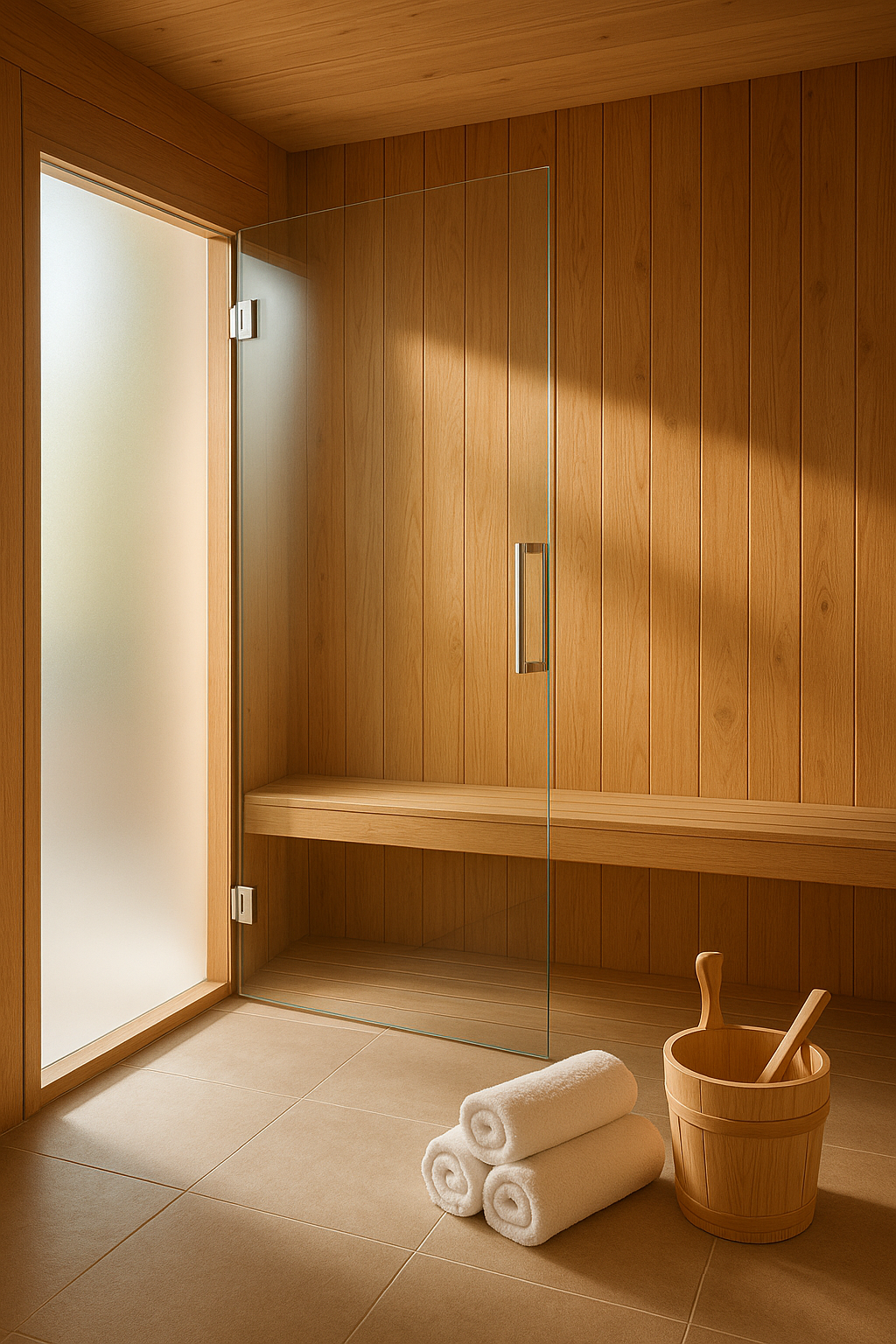Infrared Sauna vs Conventional: Benefits, Differences, and What You Need to Know
Which One Deserves a Spot in Your Home Spa?
Why This Sauna Debate Matters
If you’re exploring the idea of bringing a sauna into your home or enhancing your wellness routine, you’ve likely stumbled on a critical question: Should you go infrared or stick to traditional heat?
Saunas have long been celebrated for their detoxification benefits, stress reduction, and support for overall health. But with modern technology entering the picture, the landscape has evolved. Infrared saunas are now taking centre stage alongside conventional (Finnish) saunas.
So, which one is right for you?
In this guide, we’ll break down the differences, compare the health benefits, explore the science, and help you make a confident decision that aligns with your goals, space, and lifestyle.
What Is the Main Difference Between Infrared and Conventional Saunas?
Understanding the core difference between these sauna types is the key to choosing what suits you best.
| Feature | Infrared Sauna | Conventional Sauna |
|---|---|---|
| Heat Source | Infrared light (near, mid, far) | Electric or wood-burning heaters |
| Temperature Range | 110–135°F | 150–195°F |
| Heating Mechanism | Heats your body directly | Heats the air, which then warms you |
| Experience | Dry, gentle, penetrative heat | Steamy, intense, immersive heat |
| Setup | Compact, plug-and-play options | Requires ventilation and insulation |
| Energy Efficiency | Lower energy consumption | Higher electricity or wood use |
| Best For | Detox, chronic pain, sensitive users | Traditionalists, heat lovers |
How Infrared Saunas Work
Infrared saunas use infrared panels to emit light waves that penetrate your skin and warm your body directly from the inside out. The technology involves three types of infrared wavelengths:
- Near-infrared – Promotes wound healing and skin rejuvenation
- Mid-infrared – Enhances circulation and reduces inflammation
- Far-infrared – Deep detoxification and weight loss through intense sweating
These saunas typically operate at lower temperatures (110–135°F), yet still produce a deep, purifying sweat, making them ideal for those sensitive to heat.
How Conventional Saunas Work
Traditional Finnish-style saunas heat the air inside an enclosed room using:
- Electric or wood-burning heaters
- Volcanic rocks to retain and radiate heat
- Steam created by pouring water on the hot stones
This produces an environment where the entire room is heated, resulting in a sweat-heavy, immersive experience that’s great for full-body detox and cardiovascular support.
Which Sauna Fits Best in Your Home?
Space Considerations
- Infrared units are compact and pre-built, ideal for condos or small homes
- Traditional saunas require more space, insulation, and often a custom setup
Health Sensitivities
- Heat-sensitive individuals often prefer infrared’s gentle warmth
- High-heat enthusiasts usually lean toward conventional saunas
Budget Comparison
- Infrared saunas typically start at $2,000–$3,500
- Traditional saunas can range from $5,000–$12,000+, depending on installation and materials
Maintenance
- Infrared: Low maintenance; just occasional panel cleaning
- Traditional: Needs stone replacement, steam cleaning, and regular checks
🔍 Explore Your Sauna Options
Looking for a home sauna that fits your lifestyle and wellness needs? Browse our full range of Infrared Saunas at InfiniteSauna.com—designed to combine innovation, relaxation, and everyday luxury.
Still unsure which sauna fits your lifestyle?
👉 Take our free Sauna Quiz to find the perfect model for your needs
💡 Or calculate your energy use with the Sauna Energy Calculator

Science-Backed Health Benefits: Which Sauna Wins?
Let’s explore how both types stack up based on peer-reviewed studies and medical insights.
Detoxification
Infrared saunas can help remove heavy metals and endocrine-disrupting chemicals like BPA and phthalates through deep sweating.
Study: Human Excretion of Bisphenol A: Blood, Urine, and Sweat (BUS) Study
Traditional saunas also promote detox, but rely on surface-level sweating induced by hot air.
Cardiovascular Health
- Infrared mimics cardio workouts, increasing circulation and heart rate.
-
Traditional use is linked to a 63% reduction in sudden cardiac death according to a Finnish study.
Source: PubMed – Sauna Bathing and Heart Health
Pain Management and Muscle Recovery
Infrared’s penetrating heat is ideal for:
- Arthritis
- Fibromyalgia
- Chronic fatigue
- Post-injury recovery
Conventional saunas offer a relaxing, whole-body experience that helps loosen tight muscles.
Mental Wellness and Sleep
- Both sauna types support the release of endorphins and reduce cortisol
- Improved mood, mental clarity, and sleep quality are consistently reported
- One study noted sauna bathing helped ease depression and anxiety symptoms over time
Source: Evidence-Based Complementary & Alternative Medicine (2019)
Hybrid Saunas: The Best of Both Worlds
Can’t choose between the two? A hybrid sauna might be your perfect match.
These innovative units combine infrared panels with traditional heaters, letting you switch between heat sources or enjoy both simultaneously.
Hybrid Sauna Benefits:
- Full temperature range (110–195°F)
- Switch between dry and steam sessions
- Personalised experience for multiple users
- Ideal for couples or families with different preferences
👉 See our Hybrid Sauna Collection to explore models that blend tradition and innovation.
Buyer’s Checklist: What to Look for in a Home Sauna
Here’s what to consider before purchasing:
✅ Available Space – Indoor, outdoor, or portable?
✅ Preferred Heat Style – Infrared for gentle, deep heat or traditional for high-temp sweat sessions
✅ Number of Users – Solo or group use? 1-, 2-, or 4-person sizes vary
✅ EMF Levels – Look for low-EMF or near-zero EMF saunas
✅ Materials – Choose non-toxic, hypoallergenic woods like hemlock or cedar
✅ Warranty – Reputable saunas offer 5+ years coverage on heaters and electronics
✅ Certifications – Look for ETL, CE, or RoHS certifications for safety and energy efficiency
FAQs: Answering the Most Common Questions
Is an infrared sauna better than a traditional sauna?
It depends on your body’s response. Infrared is great for chronic pain and low-heat tolerance, while traditional suits those craving an intense sweat.
How long should I use each sauna?
- Infrared: 25–45 minutes
- Traditional: 10–20 minutes (followed by cooling)
Which sauna burns more calories?
Infrared may burn 200–600 calories per session due to increased heart rate and extended use.
Can I install both at home?
Yes. You can either install both separately or go for a hybrid sauna.
Is it safe to use a sauna every day?
Yes—for most healthy adults. Just remember to hydrate, listen to your body, and avoid alcohol beforehand.
Do saunas boost immunity?
Yes. Research shows sauna use may enhance immune system function, reduce inflammation, and support lymphatic drainage.
Which sauna is best for skin health?
Infrared promotes collagen production and skin detoxification, making it a favourite for skin-conscious users.
✅ Making the Right Choice for You
The infrared vs conventional sauna debate boils down to personal goals, space, and preferences.
You might prefer:
- 🔹 Infrared for gentle detox, chronic pain relief, and daily use
- 🔹 Traditional for deep sweat, heart health, and an authentic spa experience
- 🔹 Hybrid for customisation and versatility
No matter which type you choose, you’re investing in your long-term health, wellness, and daily peace of mind.
Addional Resources:
- Human Excretion of Bisphenol A: Blood, Urine, and Sweat (BUS) Study
- Association between sauna bathing and fatal cardiovascular and all-cause mortality events









Leave a comment
This site is protected by hCaptcha and the hCaptcha Privacy Policy and Terms of Service apply.